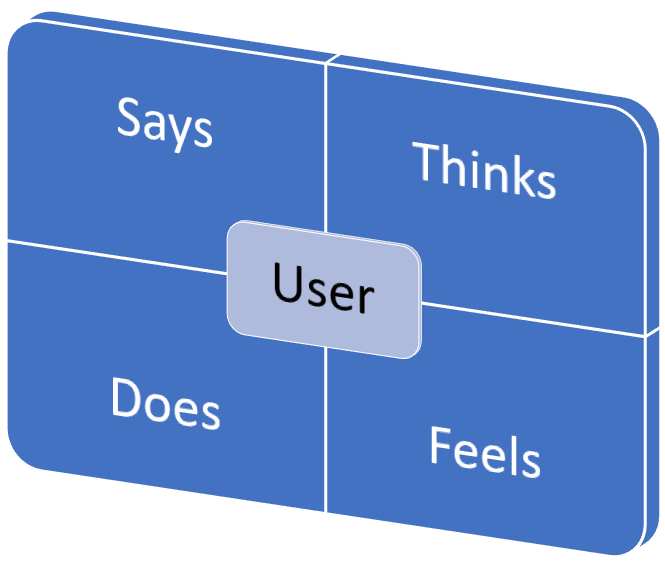How to Monetize Your Knowledge With a Consulting Business (Pt 1)
By Steven Imke | SBDC Consultant
“Having a consulting business is all about being able to monetize your knowledge.”
Having a consulting business is all about being able to monetize your knowledge. Most consulting businesses have a very narrow, but deep knowledge of a particular subject such as cybersecurity, human resource management, the law, etc. While some consulting businesses have more than one employee, a large number are simply composed of one freelance consultant wanting to monetize their knowledge. While some consultants work with individual consumers, such as being a wedding consultant, the majority of consultants engage with other businesses and share their knowledge in exchange for a paycheck.
This post is part of a two-part series on how to monetize your knowledge as a freelance consultant. In this post, we will focus on lead generation, while the next post will look at how to pitch and write winning proposals for qualified prospects.
Targeting
The first step in starting a consulting business is to have a clear understanding of what the ideal customer looks like. According to Tim Rice, a Digital Marketer for Entrepreneur, he recommends developing an Empathy map to discover the ideal customer’s worldviews. Typically, empathy maps are a tool used by User Experience (UX) designers, but it works equally well for many businesses trying to know more about their target audience.
An empathy map uses a series of questions to try to get a handle on what is going on inside the ideal customer’s head, so that any collateral material, such as the web page for the consulting business and social media engagements demonstrates that they care and understand the customer’s situation.

What do they say? – “I’m behind in my revenue projections”
What do they think? – “I know I could get more traction. I’m spinning my wheels when it comes to social media marketing.”
What do they do? – “I work from home and use offshore resources to do labor arbitrage. I listen to podcasts while driving, and I’m a big fitness junkie”.
What do they feel? – “I see their friends with jobs getting promotions and paid Healthcare.”
For more information on how to create an empathy map, Nick Babich has written an article titled 10 Tips to Develop Better Empathy Maps that shares how to create an empathy map in more detail.
Prospecting
With a better handle on who your ideal customer is and after making sure that all of your customer-facing content reflects that you understand their issues, it is time to start prospecting. Prospecting can come in the form of both active and passive prospecting
Active Prospecting
Many consultants resort to active prospecting. Active prospecting is about the push influencing style of persuading, and asserting to engage with prospects. The consulting business uses social media, emails, cold calls and speaking at events to pitch their service.
Most of the time, the recipient of active prospecting is not yet ready to buy and the consultant’s message falls on deaf ears. Active prospecting uses the spray and pray approach to marketing. Therefore, active prospecting can be a huge time suck, and make the consulting business appear sleazy and sales-y. If you choose to engage in active prospecting, make sure you automate the process, as the success rate is pretty low.
Passive Prospecting
Passive prospecting uses a pull influencing style of bridging and attracting to engage with prospects. Passive prospecting often involves the use of a lead magnet- which is a free offering- to incentivize a prospect to provide you with their email address in exchange for a free offer. Passive prospecting using a lead magnet has the added benefit of establishing you as the expert based on the depth and quality of the content you provided in the lead magnet and creating reciprocity since the prospect got some value from you at no cost.
Since most consulting businesses are all about working with other businesses to sell their expertise, LinkedIn is an obvious and natural platform to prospect for leads. An effective use of LinkedIn for prospecting is to write a LinkedIn post that starts with a question such as “Does your consulting business need more business?”, and then provide a relatively quick answer to the question to act as more of a teaser in the post’s text itself.
Since LinkedIn wants users to remain on the platform, if you include a link in your main post that takes the user off the LinkedIn platform- for example to your blog for more detailed information- LinkedIn will not like it and will give your post less reach. However, there is a work around that will not alert LinkedIn that your content has links intended to take the user off their platform.
When you write your LinkedIn post, you will want to include your links in a post’s comments instead of in the actual post itself. In the post, you will want to make a statement to the effect that you have more information or a link to a free tool that you will include in the first comment. For example, you might say at the end of your post like “For a more detailed answer to these questions. we have included a link to a more in-depth article in the post’s first comment”.
By including a statement that you are including more content or something for free in the first comment, you are creating a place to add your lead magnet, and a reason for the user to read your comment to access the additional content you provided. Moreover, LinkedIn will not penalize your posts reach for a link that takes the user off-platform since the links were included in the comment and not in the post.
In the first comment you should provide:
- Any link you offered to provide them for additional information.
- A statement such as “If you have a question. reach out to me on Twitter at…” It is best to ask them to ask a question on Twitter than to send you an email. With Twitter, they will keep the question short by forcing them to ask the question based on Twitter’s 280-character limit. Moreover, their questions will not fill up your email inbox with people looking for free advice.
- A link to something for FREE to act as a lead magnet to get their email address.
- Provide a link on how to get in touch with you if they want to contact you for a consulting gig.
- A pointer to your website so the user can do more research on you.
- A comment asking them to freely share your information with anyone else that might be interested. If you don’t ask, they will most likely not share your information, so ask for it.
For any consulting business today, video is a powerful medium to share your knowledge. Loom offers a free way to capture video and share it as a link. You can create a mini webinar that displays your desktop with your talking head in the corner, capture only your screen, or just you talking to your audience. You can then publish or download the video, and post it or include it in an email.
Related Article: How to Create Effective B2B Marketing Videos
To improve your ability to understand what does and doesn’t resonate with your audience,, you should make all of your links using bitly. You can set up a free account on bitly and then use bitly to shorten any URL. Then you can use the bitly dashboard to see how your links perform.
Qualifying
Once your prospecting has produced a lead, it is time to qualify the lead. The first step in qualifying a lead is to make sure they can make a decision. The last thing you want to do as a consulting business is to waste your time pitching to someone that is only a tire kicker or does not have the authority to make a decision.
You would be surprised about how much you can learn about a person before you meet with them. When it comes to qualifying a lead, I recommend you look at the prospect’s webpage and attempt to find them on social media. Since prospects also buy from someone that they Know, Like and Trust, you should learn to use a tool like the Lifestyle database in Reference USA to find common interests prior to moving to the pitch stage.
Next post, we will discuss the pitch meeting and how to draft a proposal.
This blog, and more, can be found on Steve’s consulting blog page, SteveBizBlog.com



